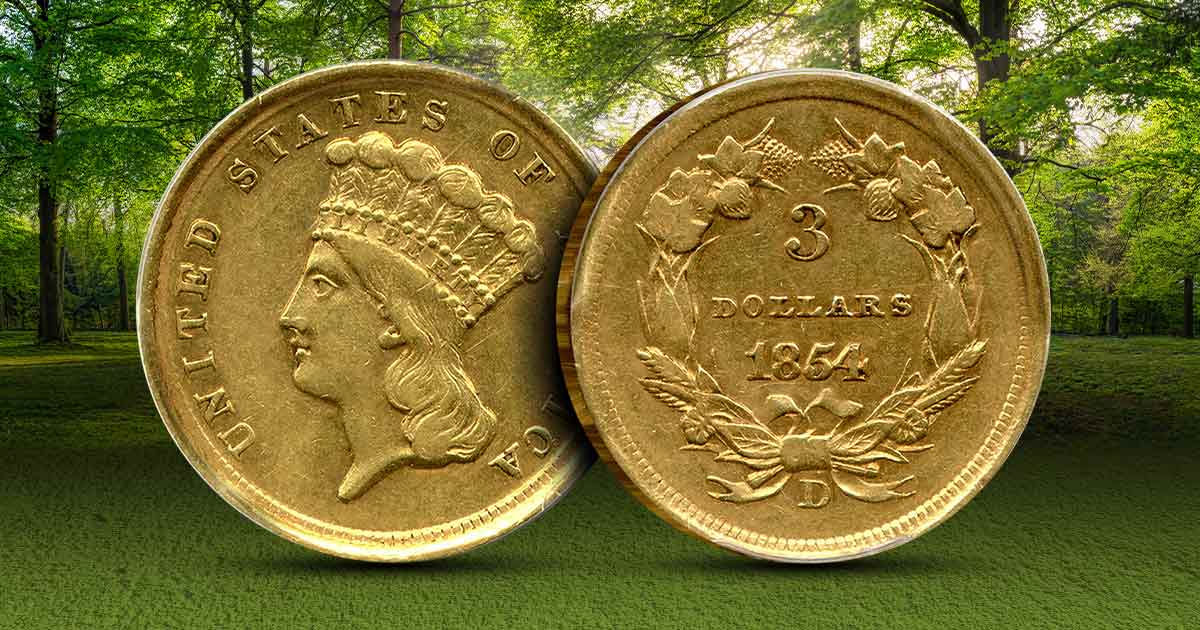
The Dahlonega Mint was a branch of the United States Mint in Lumpkin County, Georgia that produced gold coins from 1838 until 1861.
The U.S. Mint at Dahlonega was constructed amidst the Georgia Gold Rush to expedite miners getting their gold assayed and minted. Before the mint opened, miners faced the prospect of traveling all the way to Philadelphia for assay and minting.
The Georgia Gold Rush
The Georgia Gold Rush began in 1829 in Dahlonega and spread through the mountains of northern Georgia in that same year. The Georgia gold rush lasted until the early 1840s, when gold became increasingly difficult to find. This was the second U.S. gold rush after the North Carolina Gold Rush, which had ended in the early 1800s.
The Mint Act of 1835
The U.S. Mint at Dahlonega was established by the Mint Act of 1835, which passed on March 3 of that year. The Act followed the Coinage Act of 1834 and added three branches to the U.S. Mint.
The order designated one branch in New Orleans for the coinage of gold and silver, one in Charlotte, and one in Dahlonega. The Mint locations in Charlotte and Dahlonega were established for the sole purpose of coining gold.
Construction of the Dahlonega Mint
The Mint at Dahlonega was built on a ten-acre plot of land purchased for $1,050, and architect Benjamin Towns was hired to construct the building within 18 months. In 1837, a coining press that would produce 50-60 gold coins per minute was installed, along with other minting machinery.
Dr. Joseph Singleton was the first superintendent of the mint and opened the doors in February 1838. In its first week of operation, there were about one thousand ounces of gold deposited at the Dahlonega Mint and the first 80 $5 gold coins it produced were minted on April 17 of that same year.
The Dahlonega Mint Mark
Coins from the Dahlonega Mint bore a “D” mint mark and while this is the same mark used today by the U.S. Mint branch in Denver. While there is the possibility for some confusion, the Dahlonega Mint closed in 1861 and the Denver Mint opened in 1906.
Coins From the Dahlonega Mint
The Mint produced gold coins in $1, $2.50, and $5 denominations. For the single year of 1854, it produced $3 gold coins.
While complete mintages are not available, the Dahlonega Mint produced more than 1 million gold coins with a value of more than $6 million in its short 24 years. Due to their limited availability, coins from the Dahlonega Mint are rare and command an exceptional premium when they can be found.
The Dahlonega Mint and the Civil War
When the American Civil War broke out in 1861, Confederates took control of the Mint in Dahlonega. It has been speculated that there were some gold dollars and Half Eagles produced by the Confederacy from the Dahlonega Mint building. The Confederate Congress voted to close the mint on June 1, 1861.
After the Civil War ended, the U.S. government chose not to re-open the mint. The building was empty for 8 years until 1873, when North Georgia College opened. It functioned as the primary administrative and academic building for the school, but a fire destroyed the building just five years later in 1878. The building was reconstructed and named Price Memorial Hall after William P. Price, who founded North Georgia College.




